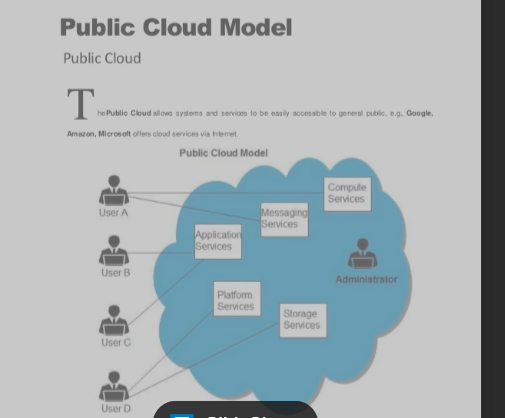Introduction to Cloud Computing
What is Cloud Computing?

An alternative for on-premises computing platforms.
It provides access to computing resources – applications, servers, data storage, development tools, and networking capabilities – hosted in the remote and managed by a cloud service provider.
Types of cloud computing services:
SaaS Software as a service:
Application software hosted in the cloud can be accessed and used via a web browser or an API that integrates with desktop or mobile operating systems. In most cases, SaaS users pay a monthly or annual subscription fee; also offer ‘pay-as-you-go’ pricing based on actual usage.
PaaS Platform as a service:
With PaaS, the cloud provider hosts everything—servers, networks, storage, operating system software, middleware, databases—at their data center. Developers simply pick from a menu to ‘spin up’ servers and environments they need to run, build, test, deploy, maintain, update, and scale applications.
IaaS Infrastructure as a service:
IaaS provides on-demand access to fundamental computing resources–physical and virtual servers, networking, and storage—over the internet on a pay-as-you-go basis. IaaS enables end-users to scale and shrink resources on an as-needed basis, reducing the need for high, up-front capital expenditures or unnecessary on-premises or ‘owned’ infrastructure and for overbuying resources to accommodate periodic spikes in usage.
Cloud Computing Types:
Public Cloud:
Cloud computing platforms are available to users over the public internet. These resources might be accessible for free, or access might be sold according to subscription-based or pay-per-usage pricing models.

Private cloud:
A private cloud is a cloud environment in which all cloud infrastructure and computing resources are dedicated to, and accessible by, one customer only. Private cloud combines many of the benefits of cloud computing—including elasticity, scalability, and ease of service delivery—with the access control, security, and resource customization of on-premises infrastructure.

Hybrid cloud:
A hybrid cloud is —a combination of public and private cloud environments. Specifically, and ideally, a hybrid cloud connects an organization’s private cloud services and public clouds into a single, flexible infrastructure for running the organization’s applications and workloads.

Conclusion
In this blog, we have covered the basics of cloud computing. We have studied the different types and services of cloud computing. In our upcoming blogs, we will deep dive into these terms. That’s it for now, thanks for reading.
References-
- Sources- Internet
Add Comment
You must be logged in to post a comment.






